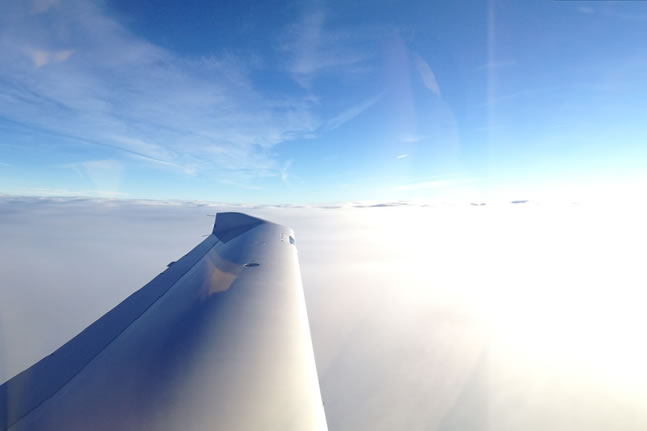Instrument Rating

Fly through the clouds with an Instrument Rating:
The instrument rating allows you to fly by reference to instruments. Flying without visual references to the ground, or with the absence of the horizon, you’ll be free to fly most anytime, anywhere, without waiting for the weather clear out. Obstructions to visibility such as clouds, fog, and haze, can dominate the skys for days. Get the most out of your pilot certificate and fly when its convinient for you and not the weather.
Earning the instrument rating is one of the greatest challenges in aviation, but also one of the most rewarding. Tthe rating greatly expands the utility of an airplane and your pilot certificates.
Instrument Rating Requirements
Prerequisite: 50 hours cross country pilot in command
Note: Some of these hours can be obtained in the process of completing the rating.
Total Instrument Time: 40 hours (minimum)
Minimum Dual (with an instrument instructor): 15 hours
Other time can be with a safety pilot (private pilot or higher rating)
Instrument Approach Types
An Instrument approach helps guide you and the airplane through the weather, ultimately right to the airport. there are several types commonly used.
GPS (RNAV): Using the Global Position System, this approach type takes advantage of newer and more advanced avionics and GPS satellites to find the runway.
VOR: Uses ground-based Very High Omnidirectional Range radio signals from fixed bases to accuately locate your position and guide you to the airport. An older system, but proven and widely used in aviation.
ADF: Uses Non-directional Beacons (radio towers) to locate the airport. The Automatic Direction Finder is used in more rural areas.
ILS / Localizer: The Instrument Landing System is the most precise approach commonly used. A component of the ILS is the localizer approach which provides horizontal guidance, but does not have vertical guidance glide slope like the ILS.
Frequently Asked Questions - Instrument Rating
Q. Do I train in actual instrument conditions?
A. Our goal is to have all students fly in actual instrument conditions. This is the best way to train for the actual conditions, by being in actual conditions.
